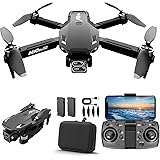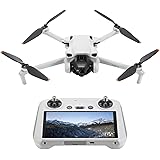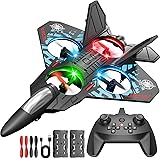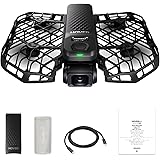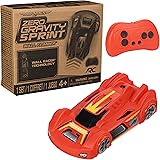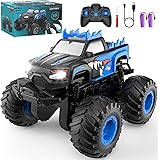With an estimated 1.1 million drones registered with the FAA by recreational flyers, the skies are becoming an increasingly popular playground for aerial enthusiasts. However, for many new drone owners, the excitement of a new purchase can quickly give way to apprehension about crashing. This guide expands upon the foundational insights shared in the accompanying video, delving deeper into safe drone flying practices and the technical nuances that transform a novice into a confident pilot.
The journey to mastering
drone flying
is one of calculated steps and disciplined practice. It necessitates a thorough understanding of both the equipment and the regulatory landscape. By prioritizing safety and deliberate learning, your initial flights will not only be successful but also lay the groundwork for more advanced aerial endeavors.Mastering Your Drone Controller: The Command Center
The remote controller is the direct interface between pilot and aircraft, functioning as the central nervous system for all aerial maneuvers. Understanding its dual-stick configuration is paramount for precise drone operation. The left stick typically governs altitude and yaw, while the right stick manages pitch and roll.
Altitude, or the drone’s vertical movement, is controlled by pushing the left stick up or down. Simultaneously, yaw refers to the drone’s rotation around its vertical axis, with left or right inputs on the left stick causing the aircraft to spin accordingly. This allows for directional changes without altering the drone’s forward trajectory.
Conversely, the right stick is responsible for the drone’s translational movements. Pitch dictates whether the drone moves forward (stick up) or backward (stick down), essentially tilting its nose up or down. Roll, controlled by moving the right stick left or right, causes the drone to slide sideways. These movements are often considered relative to the drone’s initial takeoff orientation, which can introduce a critical challenge when the drone is facing the pilot.
Decoding Essential Controller Functions
Beyond the primary control sticks, most modern drone controllers are equipped with a suite of auxiliary buttons designed for safety and convenience. The ‘Pause’ button, for instance, is an invaluable emergency feature; when pressed, the drone is instructed to halt its current trajectory and hover in place. This can prevent collisions or provide a moment to reorient the pilot.
The ‘Return to Home’ (RTH) function is another prevalent feature, initiating an automated flight path back to the takeoff point. While seemingly foolproof, over-reliance on RTH is generally cautioned. Its execution is often dependent on pre-set parameters and environmental factors, which, if not optimally configured, can lead to unexpected flight paths or even minor incidents. Manual control for landing is frequently advocated as the safer, more precise alternative.
Essential Pre-Flight Preparations for New Drone Pilots
Before any drone takes to the air, meticulous pre-flight checks are indispensable. These protocols minimize risks and ensure compliance with local aviation regulations. The first step involves ascertaining the legality of flight in the chosen location.
Applications such as Airmap or Before You Fly are indispensable resources for this purpose. These platforms delineate airspace restrictions, no-fly zones, and temporary flight restrictions (TFRs), allowing pilots to verify permissible operating areas. Neglecting this crucial step can lead to significant fines or even legal repercussions.
The physical environment for a maiden flight should also be carefully selected. A large, open field, devoid of trees, power lines, buildings, or other potential obstacles, is ideal. Such an expansive area provides ample room for error correction and reduces the likelihood of accidental contact with obstructions, which is particularly vital for those new to drone operation.
Unfolding and Powering Up Your Drone
The physical preparation of the drone itself is a straightforward but critical process. Many contemporary drones feature foldable designs for portability. Typically, the front arms are extended first, followed by the rear arms, ensuring the propeller arms are fully locked into position. Before powering on, the gimbal cover, if present, must be removed to allow the camera’s stabilization system full range of motion. Failure to do so can cause damage to the gimbal motors.
Powering on the drone and controller usually involves a specific double-press-and-hold sequence, a common safety mechanism across many brands. Once both devices are active and communicating, the pilot’s mobile device is connected to the controller, and the drone’s companion app is launched. This app provides the live camera feed, telemetry data, and access to critical flight settings.
Decoding Drone Flight Modes for Optimal Control
Modern drones are equipped with various flight modes, each tailored to different piloting needs and skill levels. These modes modulate the drone’s responsiveness and activate or deactivate certain safety features.
-
Cine Mode (or Tripod Mode): This is the slowest and most forgiving mode, ideal for beginners or for capturing cinematic, smooth footage. In Cine mode, control inputs are significantly dampened, resulting in a gentle, deliberate movement of the drone. Obstacle avoidance systems are typically fully active in this mode, providing an additional layer of safety.
-
Normal Mode: Offering a balanced performance, Normal mode provides increased responsiveness compared to Cine mode while still retaining active obstacle avoidance. The drone’s movements are swifter, making it suitable for general flight and intermediate maneuvers once basic controls are comfortably managed.
-
Sport Mode (or Ludicrous Mode): This is the fastest and most agile flight mode, designed for high-speed flight and dynamic maneuvers. Crucially, in Sport mode, obstacle avoidance systems are often deactivated. The drone’s responsiveness is maximized, requiring precise and experienced control. This mode is exclusively for advanced pilots who have developed strong manual flying skills and are confident in their ability to detect and avoid obstacles without electronic assistance.
Pilots are strongly encouraged to progress through these modes systematically, building proficiency and confidence at each stage before advancing. Hasty transitions to faster modes often result in avoidable incidents.
Navigating the Skies: First Flight Techniques
The initial flight is a landmark moment for any new drone pilot. To ensure a positive experience, a methodical approach is advised. While experienced pilots may hand-launch, beginners should always opt for a ground takeoff from a clean, hard surface. This eliminates the added complexity and potential instability associated with hand launching and catching.
Upon takeoff, the drone should be oriented to face away from the pilot. This setup maintains a direct correlation between controller inputs and drone movement: pushing the right stick forward moves the drone forward, and pushing left on the left stick turns it left. This intuitive control scheme minimizes cognitive load during the crucial learning phase.
The initial exercises should focus on isolated movements: ascending and descending, turning left and right, and moving forward, backward, and sideways. These single-axis movements build fundamental control proficiency. Repetition of these basic maneuvers, ensuring consistent and smooth responses from the drone, is key.
Conquering Orientation Challenges
A significant hurdle for new pilots arises when the drone’s orientation shifts, particularly when it faces towards the pilot. In this scenario, the directional controls (forward/backward, left/right) become reversed relative to the pilot’s perspective. For instance, pushing the right stick forward would cause the drone to fly backward from the pilot’s view. This phenomenon demands considerable mental adjustment and practice.
The solution lies in developing muscle memory through repetitive, deliberate practice. Pilots should begin by slowly and gently executing maneuvers with the drone facing them, observing its response, and consciously overriding the instinctive control inputs. This gradual acclimatization transforms counter-intuitive movements into second nature, mirroring the way a musician learns to play an instrument without conscious thought about each finger movement.
Unlocking Aerial Photography: Camera Settings & Best Practices
For many, the appeal of drones lies in their capacity to capture stunning aerial imagery. Modern drones are equipped with sophisticated cameras, and understanding their settings can dramatically elevate the quality of your photos and videos.
For beginners, the ‘Auto’ camera mode is a powerful tool. In approximately 90% of common shooting scenarios, Auto mode capably manages exposure, white balance, and other settings to produce highly usable footage. This allows new pilots to concentrate on flight mechanics without the added complexity of manual camera adjustments. It is often recommended to utilize Auto mode extensively for initial flights, ensuring that basic flight control is solidified before delving into photographic intricacies.
Venturing into Manual Camera Settings
For those seeking greater creative control and professional-grade results, understanding manual camera settings is essential. The core parameters are ISO, shutter speed, and white balance.
-
ISO: This setting controls the camera sensor’s sensitivity to light. The rule of thumb is to keep ISO as low as possible (e.g., ISO 100) to minimize digital noise, which manifests as graininess in the image.
-
Shutter Speed: This determines the duration for which the camera’s sensor is exposed to light. A common guideline for video is the “180-degree rule,” which states that the shutter speed should be approximately double your frame rate. For example, if shooting at 24 frames per second (fps), a shutter speed of 1/50th of a second is ideal for achieving natural motion blur. On a bright day, achieving this low shutter speed without overexposing the image requires the use of Neutral Density (ND) filters.
-
White Balance: This adjusts the color temperature of your image to accurately represent colors under different lighting conditions. Common settings include 5500-5600K for sunny days and 6400-6600K for cloudy conditions. Manual white balance ensures consistent color rendition across your footage.
ND filters are analogous to sunglasses for your drone’s camera. They reduce the amount of light entering the lens, enabling the use of slower shutter speeds (like 1/50th) even in bright sunlight. This is critical for achieving a cinematic look in video and maintaining proper exposure without over-reliance on high ISO values.
The Critical Role of Obstacle Avoidance (and its limits)
Many contemporary drones are equipped with obstacle avoidance systems, utilizing sensors to detect and react to nearby objects. While these systems offer a significant safety benefit, they are not infallible and should never be relied upon as the sole means of preventing collisions.
Obstacle avoidance capabilities vary widely among drone models. Some drones feature multi-directional sensing (forward, backward, downward), while others may lack side or upward sensors. This means a drone could still collide with objects in its blind spots. Furthermore, these systems can struggle with thin objects like power lines or small branches, or in challenging lighting conditions.
A pilot’s manual dexterity and situational awareness remain the most reliable forms of collision prevention. Obstacle avoidance should be viewed as a valuable safety net, not a replacement for diligent piloting. Consistent vigilance and a thorough understanding of the drone’s sensor limitations are essential for safe operation.
Building Piloting Prowess: The Power of Practice
Like any skill, drone piloting demands consistent practice to achieve mastery. The goal is to develop muscle memory, allowing the pilot to execute maneuvers instinctively without conscious deliberation over each stick movement. This transition from thoughtful input to automatic response is the hallmark of a proficient pilot.
Dedicated practice sessions, ideally involving several battery cycles daily for a week, can yield significant improvements. Initial drills should focus on basic, isolated movements in a wide-open space. As proficiency grows, more complex maneuvers can be introduced, such as combining controls to execute an orbit around a subject. This involves simultaneously controlling yaw, roll, and pitch to maintain a circular path while keeping the camera focused.
Throughout the learning process, maintaining visual line of sight with the drone is crucial, even when monitoring the screen. Peripheral vision for potential obstacles and a quick glance back at the drone’s physical position provide a comprehensive awareness that solely relying on the screen cannot offer. This dual-focus approach safeguards against unexpected hazards.
Drone flying offers an exhilarating avenue for exploration and creativity. By embracing safety protocols, understanding the technical intricacies, and committing to consistent practice, new pilots can confidently embark on their aerial adventures. The capabilities of modern drones are immense, and with a solid foundation in safe and effective
drone flying
, the sky truly becomes the limit for capturing breathtaking perspectives.


